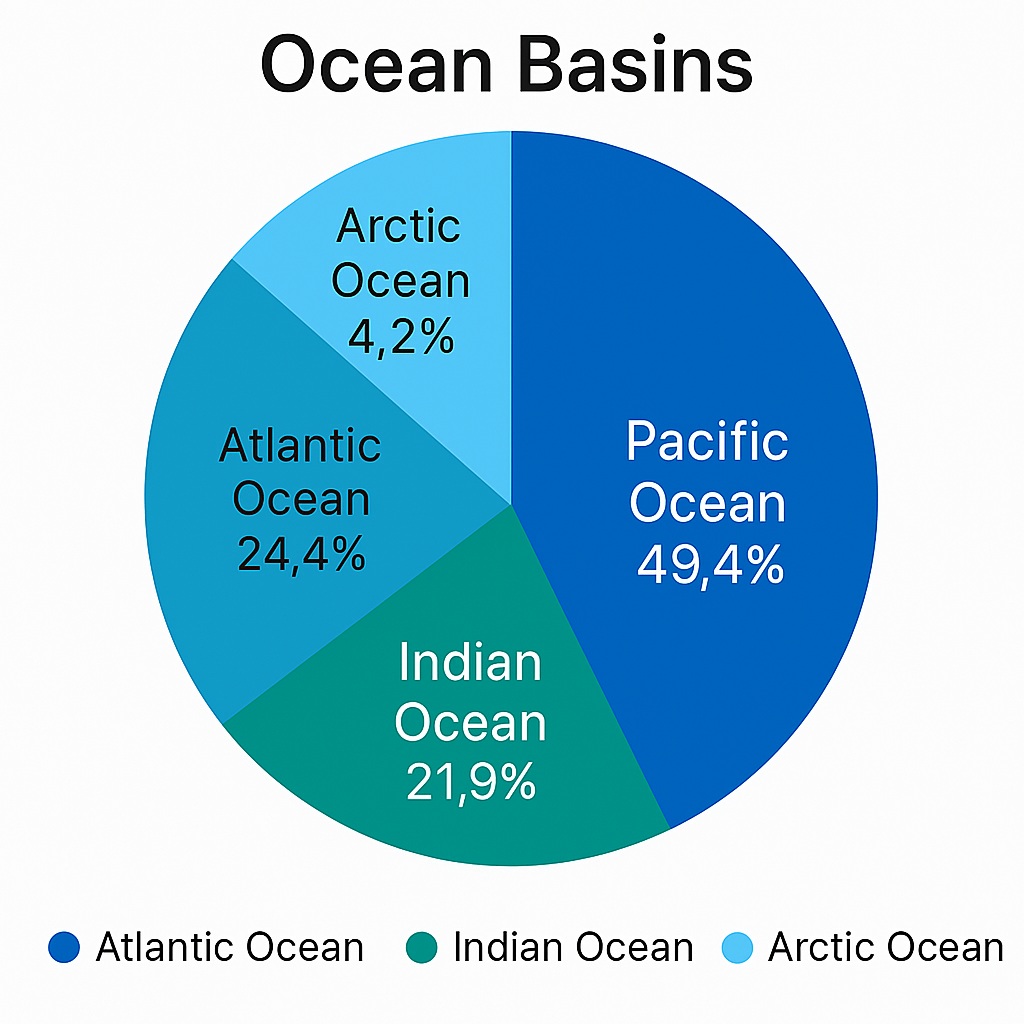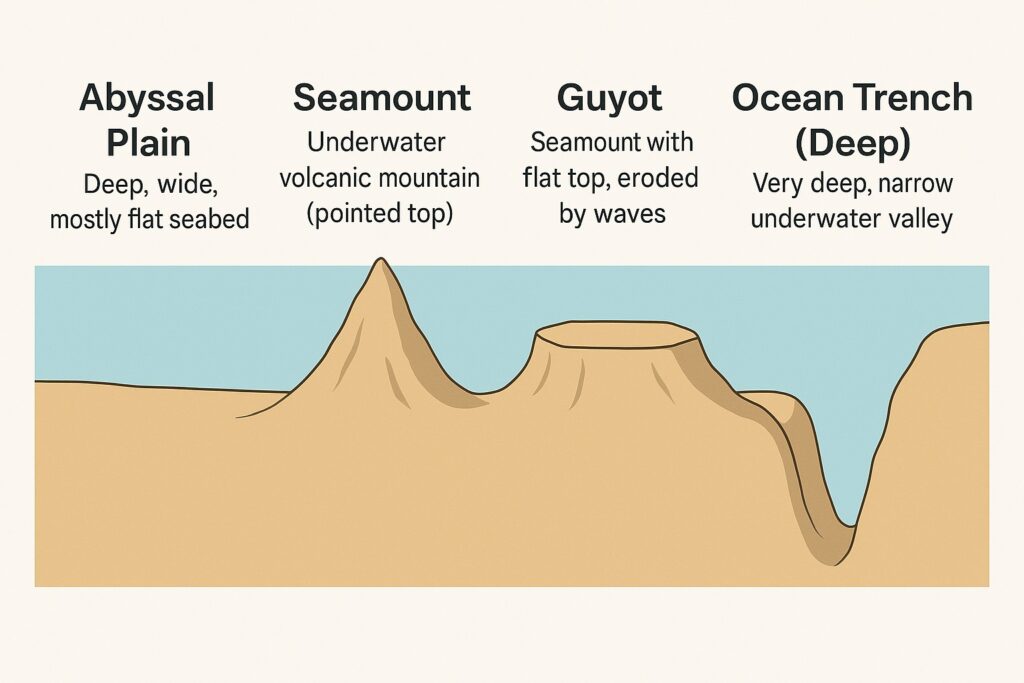Ocean basins are vast, deep depressions on the Earth’s surface that hold the world’s oceans. They cover over 70% of our planet and play a vital role in shaping climate, supporting marine life, and influencing global geography.

Table of Contents
What is an Ocean Basin?
An ocean basin is the portion of Earth’s crust that is submerged beneath ocean water. These basins are formed by geological processes and vary in depth, size, and features. There are five major ocean basins:
-
Pacific Ocean Basin – Largest and deepest
-
Atlantic Ocean Basin
-
Indian Ocean Basin
-
Southern (Antarctic) Ocean Basin
-
Arctic Ocean Basin – Smallest and shallowest
Features of an Ocean Basin
Ocean basins are not flat. They consist of several distinct features:
Continental Shelf
- It’s the edge of the continent that’s underwater.
- It slopes gently away from the coast.
- The water here is shallow (120–370 meters deep).
- Width varies: can be just a few km or over 100 km.
- Eastern coast of India has a wide shelf; western coast is narrower.
- Good for:
- Rich marine life (plankton grows well in sunlight).
- Fishing and collecting mineral resources like oil and gas.
- Example: Bombay High, Godavari basin (oil-rich areas).
- Submarine canyons (deep underwater valleys) often cut through it.
Continental Slope
- Found after the continental shelf; it’s much steeper.
- Depth ranges from 180 to 3600 meters.
- Not many animals live here because it’s deep and dark.
- Sediments collect at the bottom, forming the continental rise.
Abyssal Plains
- These are huge, flat or slightly rolling areas deep under the ocean.
- Found between 3000–6000 meters deep.
- Though once thought to be smooth, we now know they have:
- Plateaus (underwater flat-topped highlands),
- Hills, underwater volcanoes (called seamounts),
- And guyots (flat-topped seamounts).
What’s on the seabed?
- Covered in sediments (tiny particles).
- Near land: sediments come from rivers.
- Far from land: sediments often come from dead sea creatures, forming ooze.
- In lifeless areas: seabed has red clay, which comes from volcanoes or windblown dust.

Submarine Ridges
- These are underwater mountain chains, like the ones on land.
- Called mid-oceanic ridges—they crisscross the ocean floor globally.
- Have cracks (faults) and frequent earthquakes or volcanic activity.
- Example: The Mid-Atlantic Ridge—S-shaped, goes north to south.
Seamounts and Guyots
- Seamounts: Underwater volcanoes with pointed tops.
- Sometimes stick out of the water as islands (e.g., Hawaii, Tahiti).
- Guyots: These are seamounts that used to be islands, but waves flattened their tops, and they sank below the surface.
Ocean Deeps (Trenches)
- These are the deepest parts of the ocean.
- They look like long, narrow cracks or valleys with very steep sides and flat floors.
- Often located near continents, especially where fold mountains (like the Andes or Himalayas) are nearby.
- Found in areas with frequent earthquakes and volcanoes.
- Most are in the Pacific Ocean.
- The Mariana Trench is the deepest one—over 11,000 meters deep! → To imagine this: even if you dropped Mount Everest in it, water would still cover its peak by several kilometers.
How Are Ocean Basins Formed?
Ocean basins are shaped by plate tectonics, a process where the Earth’s outer shell (lithosphere) is divided into moving plates. The main geological processes include:
-
Seafloor spreading at mid-ocean ridges
-
Subduction at ocean trenches
-
Earthquakes and volcanic activity along plate boundaries
Over millions of years, these processes continuously modify the size and shape of the ocean basins.
Importance of Ocean Basins
Ocean basins are crucial for life on Earth and serve many essential functions:
-
Climate regulation through heat and current circulation
-
Habitat for diverse marine species
-
Resources such as oil, gas, and minerals
-
Pathways for global trade and undersea communication cables
-
Insight into Earth’s geological history